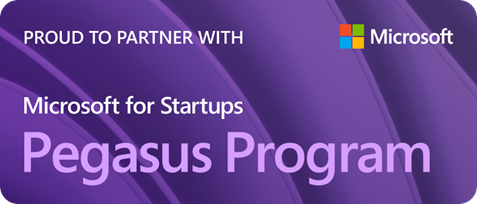Didn’t Start Left? Here’s How We Can Still Save Your Bacon with Post-Incident Response
Easily align the FIRTS.org's Product Security Incident Response Team (PSIRT) Services Framework with Start Left® Security.

Incident Response with Start Left® Security: Proactive Vulnerability Management & Remediation
At Start Left® Security, we offer more than just a set of tools to react to vulnerabilities—we empower organizations with a proactive approach to incident response, leveraging our full Application Security Posture Management (ASPM) platform. Our capabilities, including Software Composition Analysis (SCA), Software Bill of Materials (SBOM), Static Application Security Testing (SAST), Dynamic Application Security Testing (DAST), Infrastructure-as-Code (IaC) Security, and Container Security Scanning, work seamlessly within our PIRATE® model (Product Integrated Risk Analytics & Threat Evaluation) to support Product Security Incident Response Teams (PSIRTs). This holistic approach ensures that vulnerabilities are not only identified and assessed but also prioritized and remediated with speed and accuracy, turning incident response into a streamlined, efficient process.
How Start Left® Supports Incident Response:
1. Accelerated Forensics and Investigation Capabilities
a. Real-Time Visibility into Product and Asset Context
Start Left’s PIRATE® model provides continuous monitoring of your product landscape, allowing teams to instantly pull up historical vulnerability data, asset details, and code contributions. This enables rapid identification of potential exploit paths, impacted systems, and responsible teams or developers.
b. Quick Identification of Affected Assets and Code
Using dynamic SBOMs (Software Bill of Materials) and comprehensive scanning tools like SCA, SAST, DAST, IaC, and Container Security Scanning, you can trace vulnerabilities back to their origins in the codebase, containers, or infrastructure. This granular asset visibility helps investigators determine what was compromised, how it was exploited, and where the issue originated.
c. Rapid Assignment of Ownership for Remediation
In a forensics scenario, time is of the essence. Start Left automates the process of assigning ownership for specific vulnerabilities, allowing for immediate triage. You’ll know who owns the code, who’s responsible for remediation, and where to focus remediation efforts—drastically cutting down investigation time.
d. Correlating Exploitable Vulnerabilities with Forensic Data
Our platform integrates EPSS, CISA KEV, and other threat intelligence feeds to give you insights into whether a vulnerability is being actively exploited in the wild. When dealing with a zero-day or other critical incidents, this information can help investigators prioritize their responses and understand real-world exploitability.
e. Audit Trail & Historical Scan Data
Scan history and asset monitoring provide a complete audit trail of vulnerabilities, configurations, and code changes over time. This makes it easy to retrace steps during an investigation, identifying when vulnerabilities were introduced and whether they were previously flagged or missed.
f. Automated Incident Response Plans
Start Left can automate portions of your incident response workflow, making it easier for teams to quickly enact plans, gather evidence, and begin remediation efforts. This cuts down on manual effort, enabling quicker forensic analysis and recovery efforts.
By integrating Start Left® Security into your product security program, your team can expedite forensics investigations, reduce the time to discover critical answers, and gain immediate visibility into the scope of any security incidents. This allows you to contain breaches faster and ensures a more efficient recovery process.
2. Identification and Prioritization of Vulnerabilities, Including 0-Days
Start Left®’s platform provides real-time vulnerability detection across all stages of the product lifecycle. SCA, SBOM, SAST, and Container Scanning help identify vulnerabilities in open-source components, dependencies, and code. With DAST and IaC scanning, we extend coverage to runtime behaviors and infrastructure misconfigurations.
Through the PIRATE® model, vulnerabilities are evaluated for exploitability, reachability, and their connection to sensitive data (like PII or PHI), ensuring that 0-day vulnerabilities are flagged immediately, prioritized, and directed to the right teams for remediation. PIRATE® also integrates EPSS (Exploit Prediction Scoring System) and CISA KEV (Known Exploited Vulnerabilities) to provide contextual intelligence, helping organizations assess the real-world risk of discovered vulnerabilities.
3. Assessment and Reachability Analysis
The PIRATE® model is a game-changer for incident response, automating the prioritization of vulnerabilities through a detailed assessment of factors such as:
- Function-level and Dependency-level Reachability: Is the vulnerability accessible or exploitable within the product?
- Exploitability: How likely is this vulnerability to be exploited based on active threats and known exploits?
- Data Sensitivity: Does the vulnerability expose sensitive information (PII, PHI, etc.)?
- Patch Availability: Can this issue be immediately addressed with an available fix?
By combining these factors, Start Left® helps PSIRT teams quickly assess the impact of a vulnerability, understand its business implications, and prioritize remediation efforts.
4. Disposition and Remediation Across the SDLC
Start Left®’s platform integrates seamlessly into the Secure Development Lifecycle (SDLC) to support proactive incident response:
- SCA and SBOM ensure that every software component is accounted for, identifying which elements of the product have been affected by a vulnerability.
- SAST and DAST provide code-level and runtime analysis, giving developers detailed information on how to fix vulnerabilities at the source.
- IaC scanning ensures that cloud and infrastructure configurations are secure, preventing attackers from exploiting weak points in the environment.
Using Work Item Tracking integration (JIRA, Azure DevOps, etc.), vulnerabilities are automatically assigned to the right teams for remediation, while SLA tracking ensures that vulnerabilities are resolved according to best practices (e.g., NIST guidelines).
Post-Incident Response & Continuous Monitoring
Post-incident, Start Left® doesn’t just provide solutions for remediation—it helps organizations evolve by ensuring continuous monitoring and improvement. Container Security Scanning allows you to proactively scan images during CI/CD build pipelines and monitor their performance over time through asset discovery and historical scan views. This provides insight into whether a product’s security posture is improving or deteriorating, giving you the visibility needed to continuously refine your security program.
PSIRT Value: After the incident, teams can use Start Left® to gather insights into:
- Which vulnerabilities were exploited.
- How widespread the issue was across the product portfolio.
- What remediation steps need to be taken immediately and in the future.
The Role of the PIRATE® Model in Incident Response:
The PIRATE® model ties everything together, offering real-time data and insights into vulnerabilities at every stage of the product lifecycle. By providing product-centric risk analytics and threat evaluation, PIRATE® ensures that incidents are managed with precision. Here’s how it works post-incident:
- Identification: PIRATE® surfaces vulnerabilities across the product stack (code, infrastructure, containers, etc.) and identifies which vulnerabilities are connected to sensitive data, increasing their priority.
- Assessment: Vulnerabilities are enriched with KEV, EPSS, and reachability analysis, enabling the PSIRT team to assess the real-world risk. This helps avoid a scattershot approach, focusing efforts on the highest-risk areas.
- Disposition: With integrated workflows, vulnerabilities are triaged and remediated based on their business impact. PIRATE® tracks each vulnerability's lifecycle, ensuring accountability and measuring team performance through SLAs.
Let’s expand on the PIRATE® model and map its core elements to ownership, context, and risk-based modeling in enhancing a Product Security Incident Response Team (PSIRT). By incorporating the PIRATE model, you not only improve real-time incident response but also create clarity around ownership, provide a deeper product context, and elevate the PSIRT process through risk-based insights. Here's how it maps:
Mapping the PIRATE® Model to Ownership, Product Context, and Risk-Based Modeling for PSIRT
1. Ownership & Accountability
The PIRATE® model is designed to ensure that every vulnerability identified during an incident is immediately mapped to a specific product team or owner. This process ensures that accountability is crystal clear from the moment a vulnerability is detected. PIRATE® identifies which team owns the component or product that contains the vulnerability and assigns responsibility for remediation.
- Developer Responsibility: If a vulnerability is found in the code, PIRATE® will assign the specific development team responsible for that area of the codebase, ensuring that the team with the most expertise and direct knowledge of the vulnerability is tasked with addressing it.
- Ops/Infrastructure Responsibility: If the vulnerability stems from infrastructure (e.g., containers or IaC), PIRATE® assigns it to the infrastructure team responsible for managing those resources.
This real-time assignment speeds up the incident response process and avoids delays caused by uncertainty over ownership, ensuring that the right team takes action immediately.
2. Creating Context for Product Teams
The PIRATE® model enriches each vulnerability with detailed product context, making it easier for PSIRT and product teams to understand the risk involved. For example:
- What is the code processing? Is it stateless? Does it process PII, PHI, or other sensitive data?
- What’s the business impact? Is this part of a revenue-generating product, a core service, or an ancillary feature?
By including this context, product teams gain a better understanding of how a vulnerability affects the overall business. This ensures they not only patch the vulnerability but also prioritize remediation based on the importance of the affected product or service.
3. Risk-Based Modeling for PSIRT Enhancement
The PIRATE® model enhances PSIRT effectiveness by providing a risk-based prioritization engine. Instead of reacting to every incident with the same urgency, PIRATE® helps PSIRT teams focus on the most critical vulnerabilities based on a combination of factors:
- Reachability Analysis: Is the vulnerability actually reachable and exploitable? This analysis prevents time and resources from being wasted on vulnerabilities that don’t pose a direct risk to the product.
- EPSS Score: The Exploit Prediction Scoring System (EPSS) evaluates how likely a vulnerability is to be exploited in the wild, helping prioritize vulnerabilities based on real-world risk.
- Data Sensitivity: Is this vulnerability linked to sensitive data like PII, PHI, or payment processing? If so, it’s flagged as higher priority.
- CISA KEV and Threat Intelligence: The PIRATE® model integrates CISA KEV and other threat intelligence sources to enrich vulnerability data, providing real-time information on whether a vulnerability is actively being exploited.
- Patch Availability: Can the vulnerability be patched quickly, or will it require a more extensive update? This influences how PSIRT approaches remediation, ensuring faster resolution when possible.
By prioritizing vulnerabilities based on these factors, PIRATE® helps PSIRT operate more efficiently, addressing the highest-risk vulnerabilities first while maintaining continuous visibility over the product landscape.
4. Executive Awareness and Coaching for Product Teams
One of the key advantages of the PIRATE® model is its ability to provide actionable insights to leadership. This allows executives to see how well each product team is performing from a security perspective, enabling them to coach and guide teams more effectively.
For instance:
- Performance Metrics: PIRATE® generates reports on how quickly vulnerabilities are being remediated and tracks team performance against SLA targets.
- Risk vs. Business Impact: By connecting vulnerabilities to the business value of the affected product, PIRATE® ensures that leadership has a clear view of the trade-offs involved in remediation efforts.
Conclusion
The PIRATE® model doesn’t just identify vulnerabilities—it maps them to the right owners, provides deep context for product teams, and prioritizes them based on real-world risk. This integration enhances PSIRT capabilities, ensuring that product teams are empowered to manage vulnerabilities effectively while executives gain visibility into risk and remediation progress.
By incorporating PIRATE® into your incident response and PSIRT efforts, you create a risk-based program that ties together technology, business, and compliance requirements within a product-centric context. This not only strengthens your incident response capabilities but also ensures that vulnerabilities are addressed with the appropriate urgency, keeping your products—and your organization—secure.
Business Value of Start Left® in Incident Response
Start Left®’s comprehensive platform delivers clear business outcomes:
- Faster Time to Remediation: By automating vulnerability identification and prioritization, Start Lef®t significantly reduces the time needed to respond to incidents.
- Reduced Risk: With real-time exploitability analysis and integrated patch management, the platform helps organizations mitigate risk more efficiently.
- Cross-Functional Collaboration: Start Left®’s platform promotes collaboration between development and security teams, ensuring that everyone is on the same page during incident response.
- Actionable Insights for Leadership: The platform provides actionable, real-time data, giving executives a clear view of the current security posture and response effectiveness.
Conclusion: Empowering PSIRTs with Proactive Security
With Start Left® Security, incident response becomes a proactive, integrated process. Our ASPM tools (SCA, SBOM, SAST, DAST, IaC, and Container Security Scanning) work in tandem with the PIRATE® model to provide a holistic approach to identifying, assessing, and remediating vulnerabilities post-incident. Whether it’s responding to a 0-day or ensuring continuous product security, Start Left® ensures that your organization remains secure, resilient, and ready for future challenges.
By integrating security across the entire SDLC and ensuring vulnerabilities are addressed before they reach runtime, Start Left® eliminates costly post-deployment remediation and keeps your security posture strong, all while streamlining the incident response process.
SHARE!
More Resources















